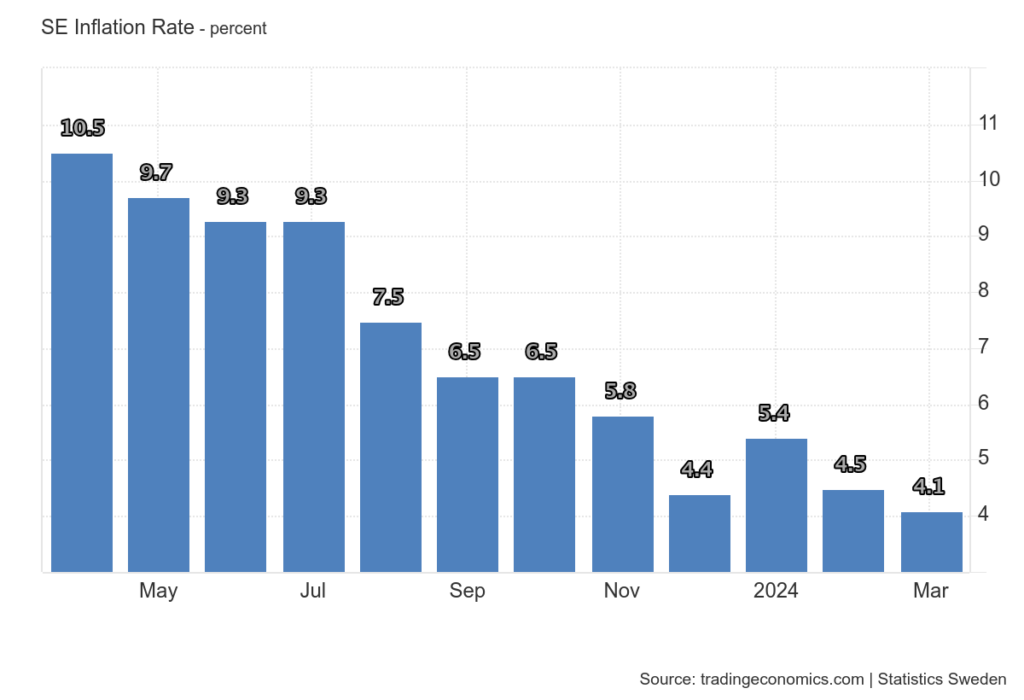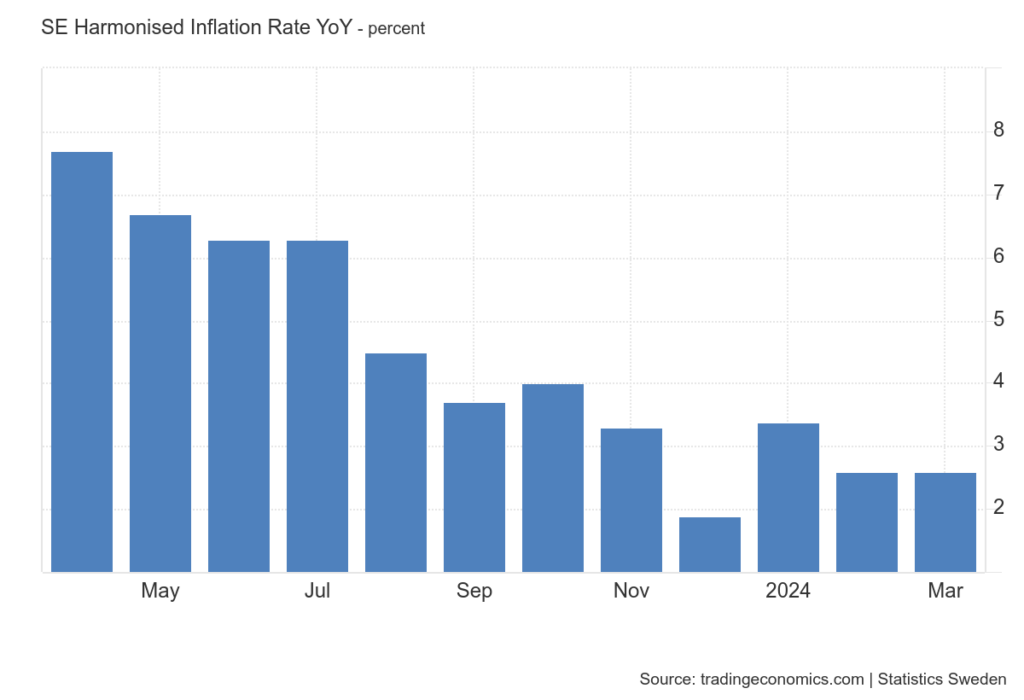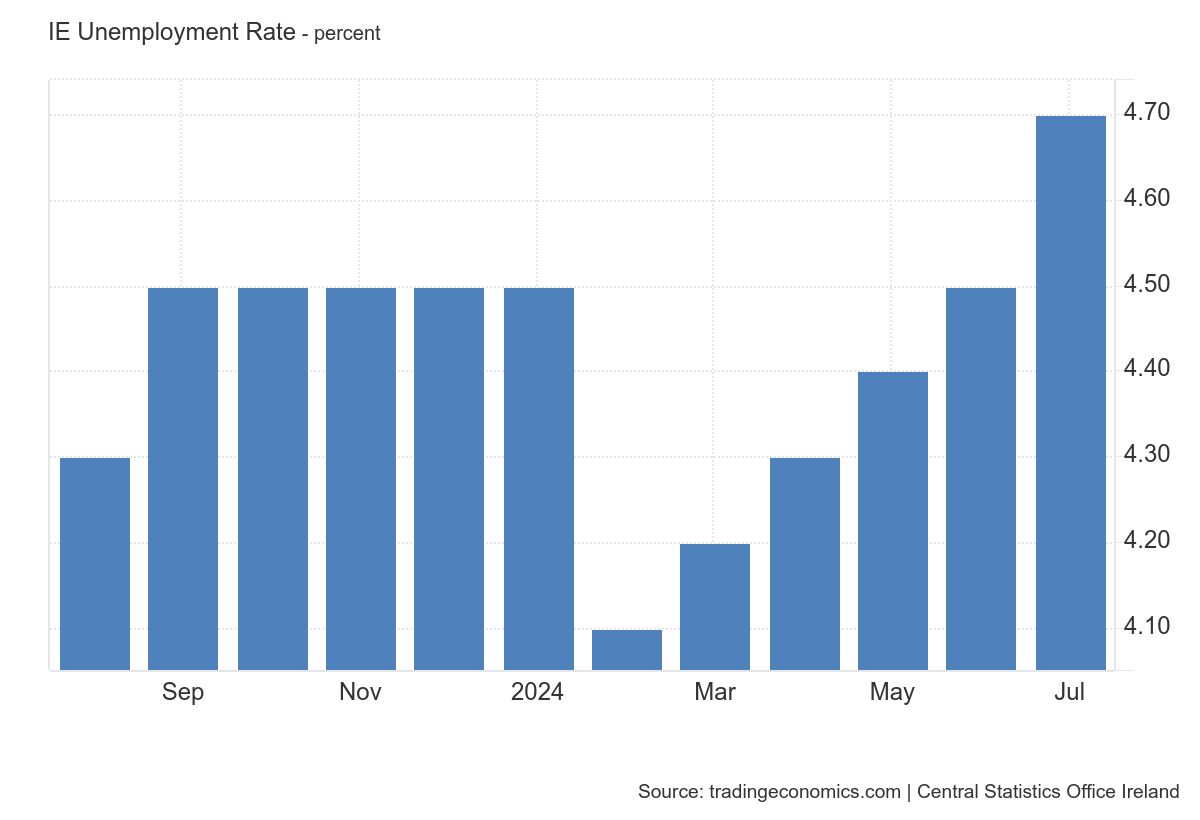Sweden Q1 -1.1% economic growth figures confirm recession for four quarters in a row
Latest Swedish GDP figures confirm a recessionary trend that has been accelerating in momentum, with a -1.1% Q1 economic growth decrease year on year and -0.1% flat negative Quarter on Quarter, economic contraction of the Swedish economy could be a feature of 2024, while unemployment rate could be rising into the double digits.


The unemployment rate in Sweden increased to 9.2% in March 2024 from 7.7% in the same month last year. unemployment in Sweden going for the double digits.
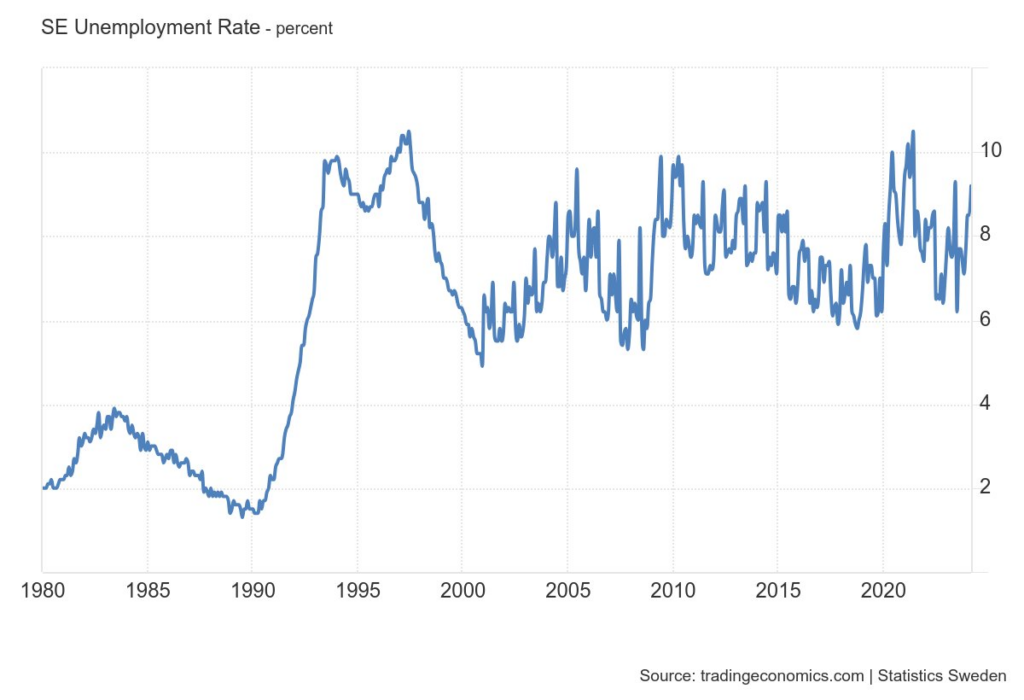
Construction industry and Housing starts have been declining at the same time for many quarters, also as a signal of the economic recession of the Swedish Economy.

for quite some time during 2023 there have been observations about Sweden’s unfolding Real Estate Market crash. The graph below tracks the decline in prices since Q4 2022.
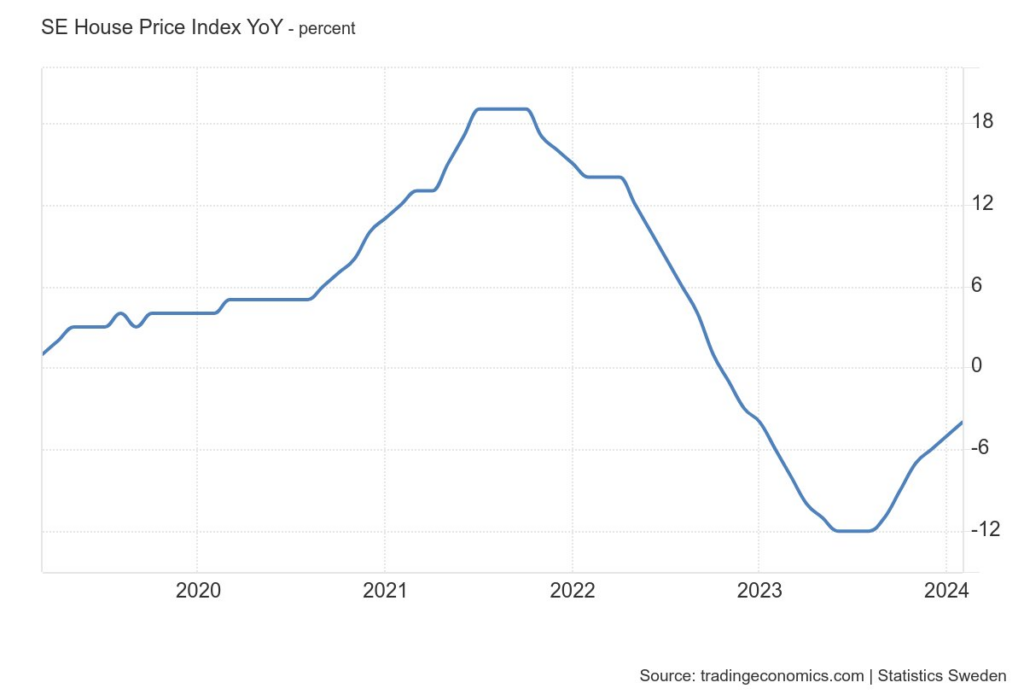
at the same time, the index of Residential Property Prices of the Swedish market has been declining since Q4 2022

The issue of the Swedish economy seems evidently Swedish Household and Corporate Private Debt ratio to GDP that has soared to 310% in 2021 and 307% in 2022 sign of a deleveraging occurence in the Swedish housing market

In fact HouseHolds Lending Growth soared to a 6.8% peak growth in credit at mid 2022, at the same time Swedish Housing market prices did start tumbling down. This sequence of graphs become particularly explicative of the covid housing market borrowing mania, that was sparked also in Sweden, that has been among the very few nations with very little sanitary restrictions and an unorthodox approach that has nothing to do with the economic outcomes, or maybe does indeed.
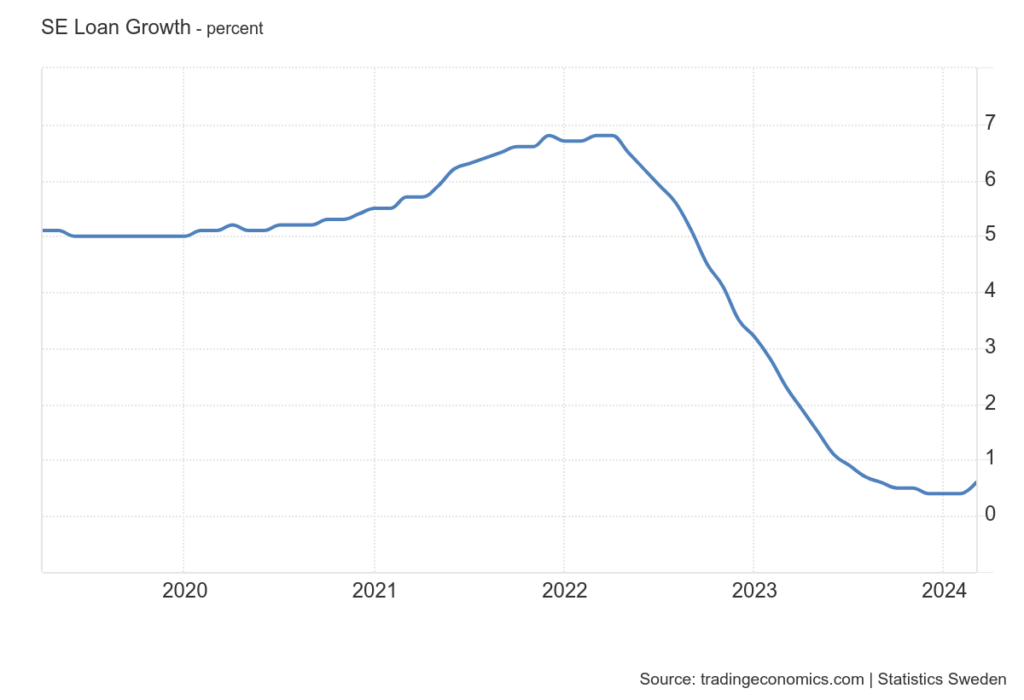


With this graph is possible to see how also the 1.8 trillion Swedish Krona outstanding loans to private sector has been modestly shrinking,
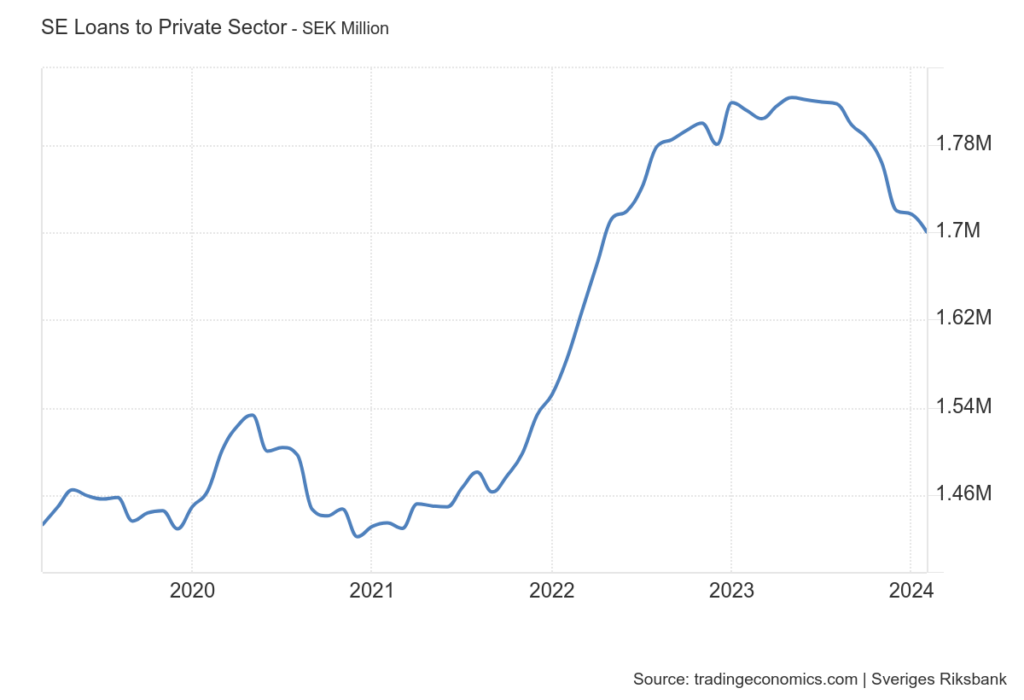
Sweden Central bank has begun slowly shrinking its balance sheet, while keeping steady interest rates at 4.1%,
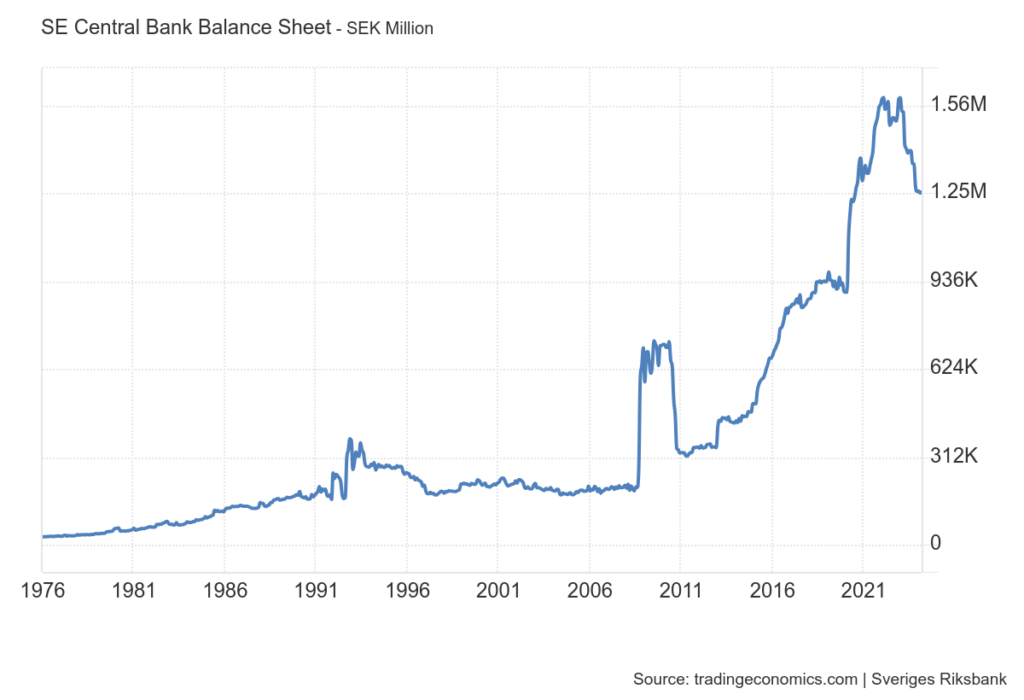
although interbank interest rate curve has started a second derivative peak effect, where the slope of the interest rate curve signal a peak at 4.15% interest rate and the interbank interest rate has been slowly decreasing, considering also that Swedish bank could be finding very difficult the deleveraging process and the lack of demand of credit from businesses and households, that have accrued 307% private debt to GDP.
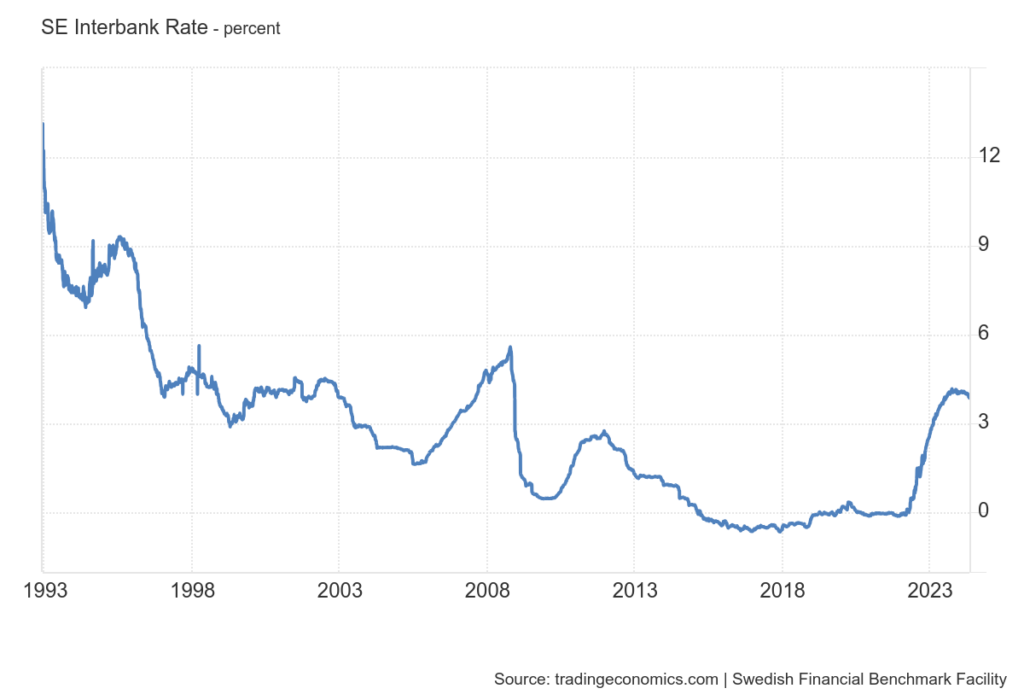
Surprisingly Consumer Inflation expectations has edged up to 6.5% in April, with swedish ordinary consumers expecting higher prices, and unanchored inflation of some sort, This could be probably a lagging effect of rising unemployment and unavailable disposable income.
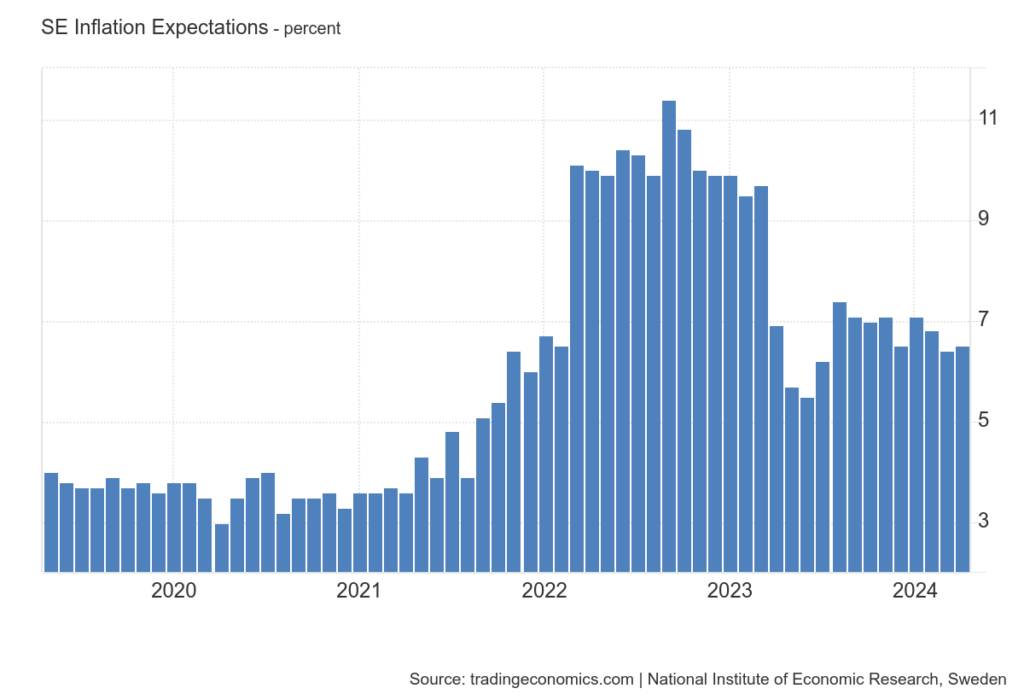
The Inflation picture of the Swedish economy seems a tale of two statistical measures, as the official inflation rate stands at 4.1% decreasing but still way off the Central Bank monetary price stability aim of 2.0%, while the HICP Inflation ratio stands at 2.6% converging toward equilibrium.
